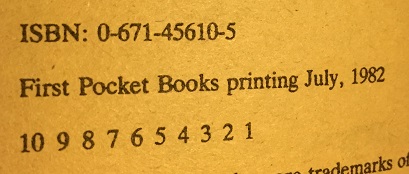I was just skimming through my most recent e-book purchase of The Wrath of Khan and remembered a scene where the Genesis scientists were talking about the size of their game program. I found the passage in Chapter 4, but in the e-book it differs from what I remember from 1982. I seem to remember the dialogue stating '50 megabytes' - a real world measurement in the original print version. The current e-book version simply says '50 megs' which could mean almost anything.
Anyone have a print copy from 1982 that can tell me I'm not completely daffy?
Anyone have a print copy from 1982 that can tell me I'm not completely daffy?




